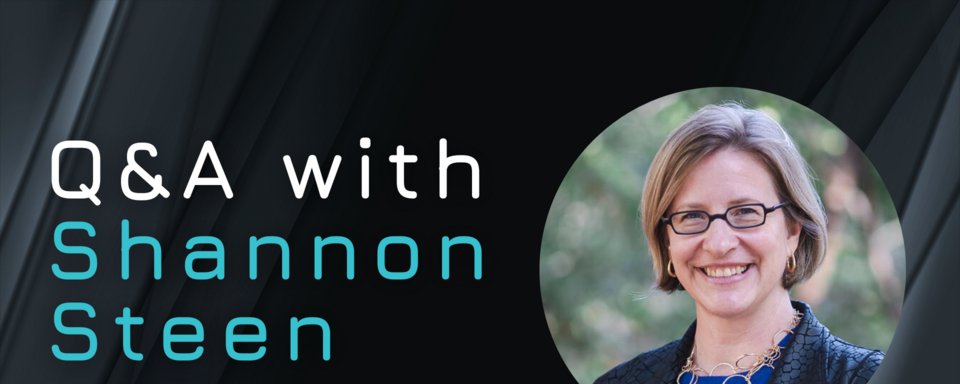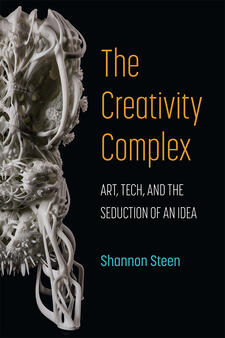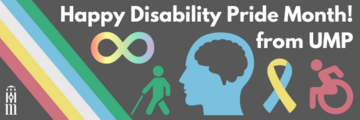Q&A with Shannon Steen

This guest author post is a Q&A with Shannon Steen, author of The Creativity Complex: Art, Tech, and the Seduction of an Idea , from the University of Michigan Press. The book is available in hardcover, paper, and accessible ebook.
What initially inspired you to explore the concept of creativity and its change in definition across time?
I had two things happen at roughly the same time, both of which I talk about in the book. The first was that my home department (I teach in Theater, Dance, and Performance Studies at UC Berkeley) was undergoing the accreditation review process, and in trying to articulate the core value of our programs to the campus, we talked about training students in what we called “The four Cs” – Communication, Collaboration, Critical Thinking, and Creativity. I was very much one of the people who formulated that language, but even as I was doing so, I found myself thinking “OK, this is great, but is what we mean by creativity in the arts the same as what people in Engineering or the Business School mean? Don’t they define creativity in a problem-solving sense?” It’s not like we’re disinterested in creativity in the arts – far from it – but we’re also, at least in my department, interested in it for different reasons or want it to do different things. Do we really want to reduce the value of art-making to what has become a language of problem-solving? Don’t we need to push for the value of symbolic world-making and ethical exploration, which are very different activities? At the time, I didn’t say anything along those lines because I felt like it was important to use language that had institutional currency or caché, especially at a STEM-heavy university like Berkeley where the arts are seen at best as a kind of niche extra-curricular, and not as a proper area of study (which I think is a pretty common experience for people in arts departments). But I started wondering what we might accidentally be enabling in reinforcing that language.
At the same time, I also started to look for a preschool for my son, and one of the things I quickly discovered was how that kind of language had penetrated the world of education, right down to how toddlers were being cared for. I found that even though the basic structure of activities was pretty similar from preschool to preschool, the more expensive preschools were all trying to convince the parents that their version of those activities was fostering creativity in the kids. Those schools especially used these confusing marketing constructs wrapped around supposedly distinctive pedagogical approaches, and made a particular point about creativity – it got highlighted and even singled out as this crucial disposition that you needed to inculcate in children at exactly this stage in their development or they’d be behind other kids who were getting it. So creativity had clearly become an elite educational branding strategy, usually less out of an interest of what creativity actually is than out of this sense of competitive academic and economic advantage.
So I started asking how we got to this point. I was especially interested in how we moved from thinking about creativity as a capacity primarily associated with artists to thinking about it in these other ways, and perhaps equally importantly, in the effects of that shift.
What surprised you the most while conducting research for this book?
So many things! I was surprised by how deep the roots of the debates around creativity go – it’s a term that in effect was used in Enlightenment debates about cognition and the relationship between the creative genius and the power of the state. But there were several other unexpected twists in the story of creativity. Its current definitions were developed by Cold War psychology researchers who held up Francis Galton – the founder of the Eugenics movement – as the progenitor of their primary research methods and areas of inquiry. Ronald Reagan’s campaign team picked up those definitions when he ran for governor of California in 1966 and used them for his campaign theme “The Creative Society,” which they then used as a direct attack on LBJ’s “Great Society” programs. In doing so, they were using these Cold War concepts of creativity to cement the modern conservative political movement in the US, and to redefine how Americans even defined citizenship and governmental representation. People who are critical of creative economies theory often criticize Richard Florida for his role in promoting these concepts of creativity, but he’s really just a millennial popularizer of these ideas. As a cultural historian, I’m not generally surprised when buzzwords that we think of as contemporary have long histories, but even I was surprised by just how far back the concepts Florida is credited with inventing actually go, and how broad their impact has been.
What are the risks of associating creative expression with individualism and uniqueness?
One of the things that the term “creativity” has been used to do is to transfer the responsibility of structural problems — wealth bifurcation, boom and bust business cycles, the erosion of public funding for necessities like education – to individuals. Ironically, that transfer of responsibility is often managed through a set of policy inscriptions that claim to liberate the creative impulse in people and organizations. In this line of thought, if people are simply creative enough, they can survive deindustrialization, austerity, corporate downsizing, and so forth — whatever problems are thrown at them, no matter the scale or cause, they should be manageable if they’re just creative enough. The political theorist Wendy Brown describes that dynamic as dismantling the social state in the name of responsibilized citizens, but the point I make in the book is that those dynamics haven’t been forced on people, they have been taken up – often enthusiastically – because people have been seduced into them via these concepts of creativity. Because how could you be opposed to creativity? Doing so risks making people think that you lack imagination, or are a boring corporate or bureaucratic stiff, or a killjoy or something.
Simultaneously, we also use concepts of creativity to defend all sorts of behavior with deeply problematic implications, for other people or for society more broadly — it's another way that we use concepts of creativity to idealize the individual at the expense of the social. In one of the chapters, I talk about the stage, screen, and literary adaptations of Frankenstein that have mushroomed in the last decade. Of the various really quite radical things Mary Shelley did in that novel, one of the biggest was to take aim at the various intellectual and political shields that had been used to protect the creative genius figure. She went after the Enlightenment idea that the genius figure should just be left to create whatever they were interested in, that they shouldn’t have to consider the implications of those creations as that could inhibit their imaginative capacity – an idea that the various figures of Romanticism, especially in Shelley’s circle, embraced enthusiastically. A number of people have read Frankenstein’s flaw as principally one of narcissism or hubris, but a number of these recent adaptations stress that he operates in the world in the way he does because he’s been given so much latitude due to his creative genius. And importantly, that critique is one that applies not only to the sciences – Victor’s world – but the world of the arts as well.
Recent developments in AI technology have allowed people to increasingly rely on artificial intelligence to generate content including text, images, music and even code for websites or software. How do you think AI generated content will impact how we understand and value creativity, both in the arts and tech?
This is a huge question, isn’t it? I think it’s going to intensify both the economic insecurity of people in “creative class” jobs (to whatever extent that category meaningfully exists) and also the fetishization of “human creativity” (to whatever extent that actually operates independently of technology). We’re already talking about how AI will likely replace the labor of a lot of graphic designers and screenwriters, but we’re talking a lot less about how it can write code as well, so it really does have the capacity to undermine workers across a very broad spectrum of intellectual labor that has been celebrated as the “creative class.” As it does so, we’re seeing people take refuge in this Romanticist idea that creativity is a central characteristic of the human – there are a lot of people making the argument that only humans can be properly or fully creative as a way to distinguish and elevate human labor above AI output, and that this will save us from the various threats AI poses.
As a whole slew of people have pointed out, this is one of the ways that our concepts of creativity are profoundly Romanticist in orientation. There’s a fantastic moment in Jeanette Winterson’s Frankissstein adaptation that I talk about in the book where Claire Clairmont (Mary Shelley’s step-sister) infuriates Byron and Percy Shelley by joking about a machine that could write poetry – the two poets are completely unwound by the idea that this activity that they consider the apogee of human reason could be performed by a machine. But whether or not human creativity operates as even a separate sphere of activity from that of AI – let alone whether it can protect us from the economic destabilization of the latter – very much remains to be seen. If I were to speculate on this, I’d predict that the output of human intellectual capacity will be used even more as a limited-availability luxury branding strategy than it already is, in that it will be less broadly available in domains where we currently take it for granted. The intellectual historian David Bates has been talking about this, but I think it’s pretty clear that it will become increasingly difficult to disaggregate human intellectual labor from that of machines – they’re already profoundly intertwined, and that will only become more the case. And there is so much we really can’t predict about how that will play out.
What do you hope readers will take away from reading The Creativity Complex?
Ultimately, what I want readers to understand is that the way we talk about creativity now may be actually quite bad for us as a society, right as we’re promoting it to save us from everything from mental health problems to post-industrial malaise to the threats of AI. The term is used in so many policy worlds now – especially in education and urban and economic development, but in others like electoral politics as well, and we really do need to stop with the assumption that creativity is somehow inherently beneficial. There are just too many examples about how that line of thinking is used to justify all manner of deeply damaging activity, especially in the tech world, but in the arts world too.
I end the book with a set of precepts for how we might need to redefine creativity or to shift how we talk about it in order to undo some of the really quite significant damage that has been wrought in its name – I stress that we need to redefine it as a social process, and not just as a privileged domain of individual expression. I talk about how we need to recalibrate the runaway idealization of the individual that becomes justified through the way we use concepts of creativity right now. But I also end with trying to think about how these more socially-oriented concepts of creativity might be helpful in trying to mitigate the relentless nihilism of the current political moment. That segment might be the most important of the book – I hope to keep working with those questions moving forward.




